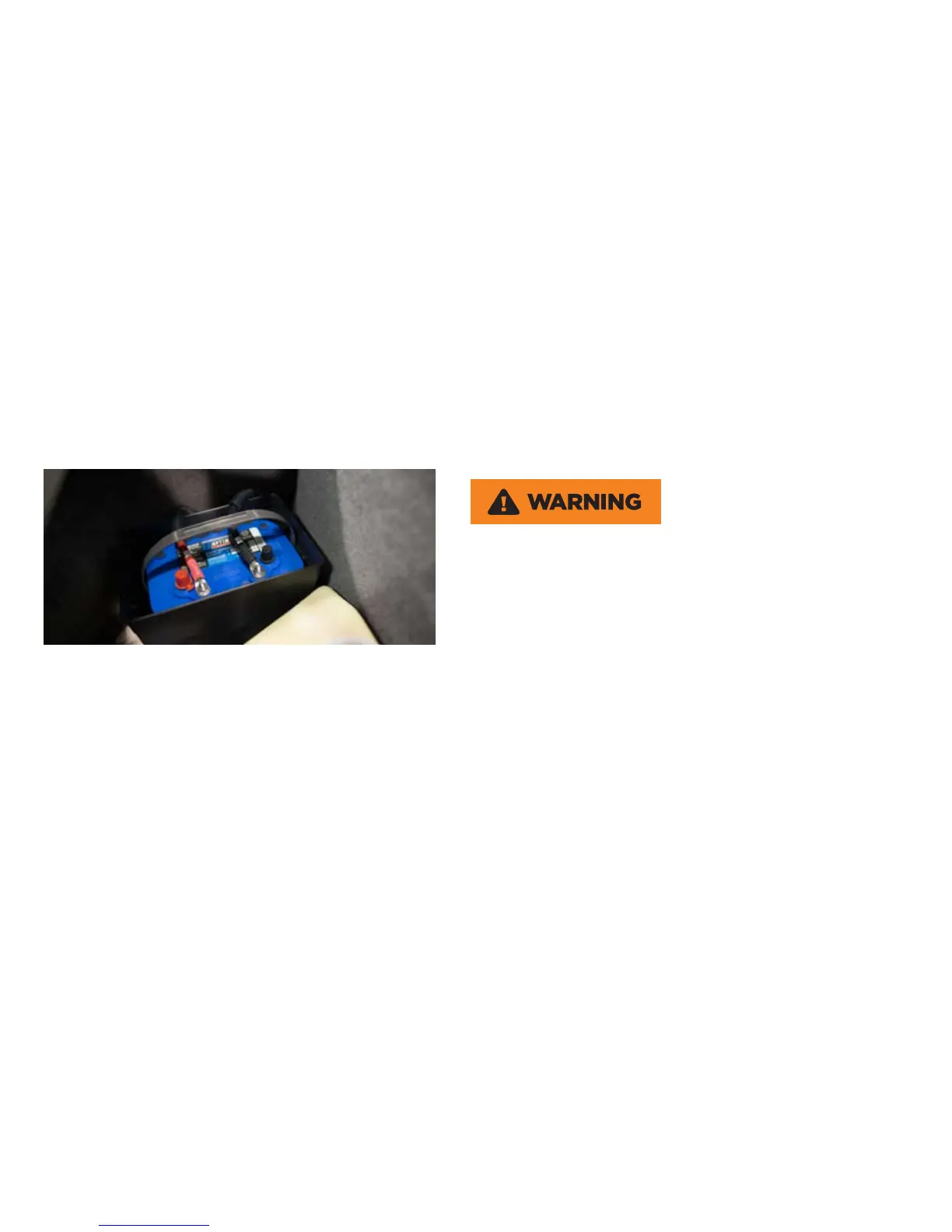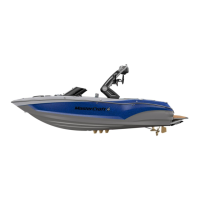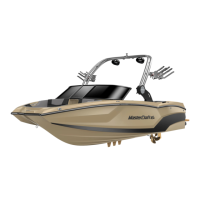Loosen and remove the positive terminal connection. Remove the
battery hold-downs and remove the battery from the boat. Clean
corrosion from the battery posts with a battery terminal cleaner.
Clean the battery with a water-and-baking-soda solution. Use care
to avoid allowing the solution to enter the battery vents. Rinse the
battery with fresh water.
Battery electrolyte fluid is dangerous. It contains sulfuric acid,
which is poisonous, corrosive and caustic. If electrolyte fluid is
spilled or placed on any part of the human body, immediately flush
the area with large amounts of clean water and immediately seek
medical attention.
Use a battery terminal cleaning brush to remove corrosion from
the inside of the battery terminals. Clean the terminals with a wa-
ter-and- baking-soda solution and rinse with fresh water.
Check the battery box that normally holds the battery in place to de-
termine whether there is evidence of battery fluid inside it. Battery
fluids are corrosive and can cause permanent damage to the bat-
tery box. If fluid is evident, wash out the box with the water-and-bak-
ing-soda solution that is used in cleaning the terminals. Rinse with
fresh water and dry with a cloth.
Reconnect the positive terminal first, then the negative. Tighten the
terminals. Coat both terminals completely with a thin covering of
marine dielectric grease. Be sure that the rubber boot covers the
positive terminal completely.
Inspect the Battery Connections
and Hold-Downs
Because poor connections or hold-downs may result in erroneous
voltmeter readings, MasterCraft recommends doing this before
starting the boat.
Step 1
Ensure the engine is OFF and the engine safety starting switch
disconnected. Be certain that the throttle/shift control lever is
in neutral. Locate the battery. Batteries are placed in a variety of
locations, depending on the model. Check under the observer seat
or behind the rear seat.
Step 2
Check that the battery post connections are clean and tight. If not,
loosen and remove the negative terminal connection first. Be care-
ful not to touch the positive terminal with the wrench.
